No products in the inquiry.

Use of Fermenter in Biofertilizer Production
Fermenters play a crucial role in the production of biofertilizers through the process of fermentation. Biofertilizers are organic fertilizers that contain live beneficial microorganisms, such as bacteria, fungi, and algae, which enhance soil fertility and plant growth. The use of fermenters in biofertilizer production allows for controlled and optimized conditions to promote the growth and multiplication of these beneficial microorganisms.
Key Stages involve in Process of Making Biofertilizer using Fermenter
The process of making biofertilizer using a fermenter involves several key stages. These stages are essential for producing high-quality biofertilizers with viable and beneficial microorganisms. Here are the key stages involved:
1. Inoculum Preparation:
- Obtain a pure culture of the desired beneficial microorganism (bacteria, fungi, or algae) through isolation and selection processes.
- Grow the pure culture in a laboratory setting to obtain a healthy and active inoculum. This is typically done in a small-scale culture medium.
2. Fermenter Setup:
- Transfer the inoculum to the fermenter vessel, which is a specialized container designed for controlled microbial growth.
- Ensure the fermenter is clean and sterilized to prevent contamination and unwanted microorganisms.
3. Medium Preparation:
Prepare a nutrient-rich medium that contains essential elements required for the growth and multiplication of the target microorganism. The composition of the medium depends on the specific microorganism being cultivated.
4. Inoculation:
- Introduce the prepared inoculum into the fermenter containing the nutrient medium.
- The microorganisms start to consume the nutrients and grow exponentially.
5. Fermentation Process:
- Maintain optimal conditions within the fermenter for the growth of the microorganisms. This includes controlling parameters like temperature, pH, oxygen supply, and agitation rate.
- Monitor the fermentation process closely to ensure the microorganisms are thriving and metabolizing efficiently.
6. Biomass Growth:
- As the fermentation progresses, the microorganisms multiply and increase in biomass. The aim is to achieve a high concentration of viable and active microorganisms.
7. Harvesting:
- Once the fermentation process is complete or the desired microbial concentration is reached, the biofertilizer is harvested.
- Separate the biomass from the fermentation medium using techniques like centrifugation, filtration, or sedimentation.
8. Formulation and Packaging:
- Process the harvested biomass into a suitable form for application. It can be converted into powder, granules, or liquid formulations.
- Package the biofertilizer in containers that maintain the viability of the microorganisms during storage.
9. Quality Control:
- Conduct quality control tests to ensure the biofertilizer meets specific standards and contains a high count of viable microorganisms.
- Check for the absence of contaminants and assess the viability of the microorganisms.
10. Application:
- Distribute high-quality biofertilizer for use in agriculture, horticulture, or gardening to improve soil fertility and enhance plant growth.


Fermex Solutions LLP Manufacturers Fermenters that can be used for these productions
- Solid State Fermenters | Pilot Scale
- Solid State Fermenters | Industrial Scale
Benefits of Fermenters in the Production of Biofertilizer
Fermenters play a vital role in the production of biofertilizers and offer numerous benefits that contribute to the successful and efficient manufacturing of high-quality biofertilizer products. Here are some of the key benefits of using fermenters in biofertilizer production:
1. Controlled Environment:
Fermenters provide a controlled environment for microbial growth and reproduction. Factors such as temperature, pH, oxygen supply, and agitation can be precisely regulated, optimizing the conditions for the growth of specific beneficial microorganisms. This control ensures consistent and reproducible results.
2. High Biomass Yield:
Fermenters allow for the production of a large biomass of beneficial microorganisms. The controlled conditions and abundant nutrient supply lead to rapid and extensive microbial growth, resulting in a higher concentration of viable microorganisms in the final biofertilizer product.
3. Efficient Fermentation Process:
With fermenters, the fermentation process is highly efficient and time-saving. The rapid growth of microorganisms and the ability to control various parameters lead to shorter fermentation times compared to traditional methods of biofertilizer production.
4. Enhanced Microbial Activity:
The controlled environment in fermenter manufacturer promotes the production of metabolites and enzymes by the beneficial microorganisms. These metabolites and enzymes can have positive effects on soil fertility, nutrient availability, and plant growth.
5. Sterility and Contamination Control:
Fermenter can be sterilized before use, ensuring that unwanted contaminants and competing microorganisms are eliminated. This helps maintain the purity of the culture and prevents the production of low-quality or ineffective biofertilizers.
6. Scalability:
Fermenter come in various sizes, allowing for scalability of biofertilizer production. Whether it’s a small laboratory-scale production or a large industrial-scale operation, fermenters can be adapted to meet the specific production needs.
7. Consistency in Product Quality:
The controlled conditions inside fermenters result in consistent and reproducible product quality. This is crucial for ensuring that each batch of biofertilizer has the same microbial composition and effectiveness.
8. Economical Use of Resources:
The use of fermenter optimizes the use of resources, including raw materials, nutrients, and energy. The efficient fermentation process reduces waste and minimizes production costs.
9. Preservation of Microbial Viability:
Fermenters allow for careful monitoring of the microbial growth process. This helps ensure that the microorganisms are harvested at their peak of viability, leading to a more effective biofertilizer product.
10. Versatility in Microbial Cultures:
Fermenters can be used to cultivate a wide range of beneficial microorganisms, including nitrogen-fixing bacteria, phosphate-solubilizing bacteria, plant growth-promoting fungi, and more. This versatility enables the production of biofertilizers tailored to specific crop and soil needs.









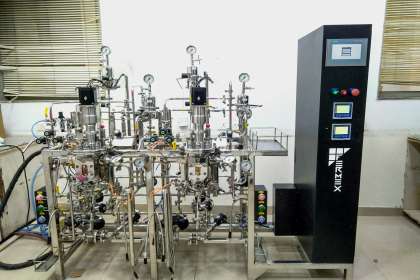
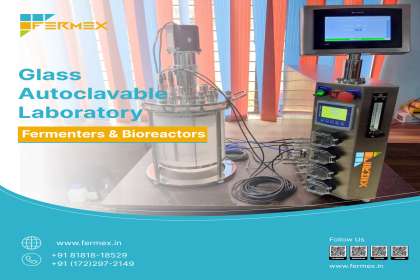
 Model No: Fermex BioFMA
Model No: Fermex BioFMA
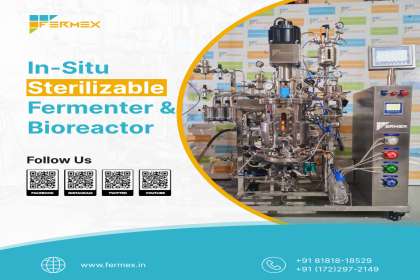
 Model No: Fermex BioFMX
Model No: Fermex BioFMX


 #kargildiwas #jaihind #rememberingthebrave #soldier #fermex #kargildiwas #rememberingheroes #salutingbravery #indiaproud...
#kargildiwas #jaihind #rememberingthebrave #soldier #fermex #kargildiwas #rememberingheroes #salutingbravery #indiaproud...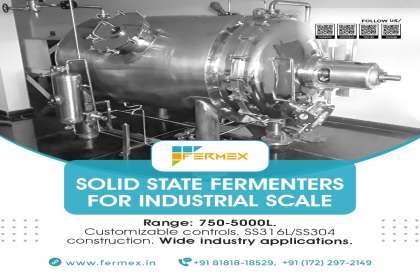
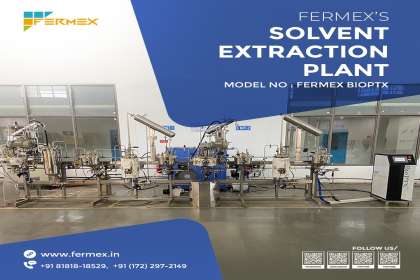
 Model No : Fermex BioPTX
Fermex BioPTX is a high-quality, customizable pilot scale solvent extraction and distillation system with energy-saving features like VFD and steam reduction.
:
For More Info Visit- www.fermex.in
:
#fermex #fermenter #bioreactormanufacturer #solvent #extra...
Model No : Fermex BioPTX
Fermex BioPTX is a high-quality, customizable pilot scale solvent extraction and distillation system with energy-saving features like VFD and steam reduction.
:
For More Info Visit- www.fermex.in
:
#fermex #fermenter #bioreactormanufacturer #solvent #extra...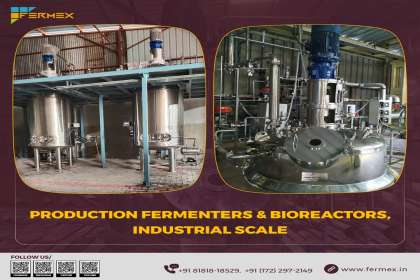
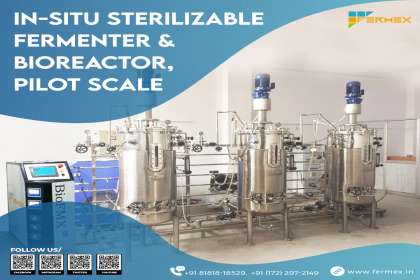



 ...
...

 Greetings on Eid-ul-Adha. May this day bring happiness and prosperity to everyone. May it also uphold the spirit of togetherness and harmony in our society. Eid Mubarak! create a social media caption
Greetings on Eid-ul-Adha. May this day bring happiness and prosperity to everyone. May it also uphold the spirit of togetherness and harmony in our society. Eid Mubarak! create a social media caption




 Get ready for a game-changing breakthrough!
Get ready for a game-changing breakthrough!

